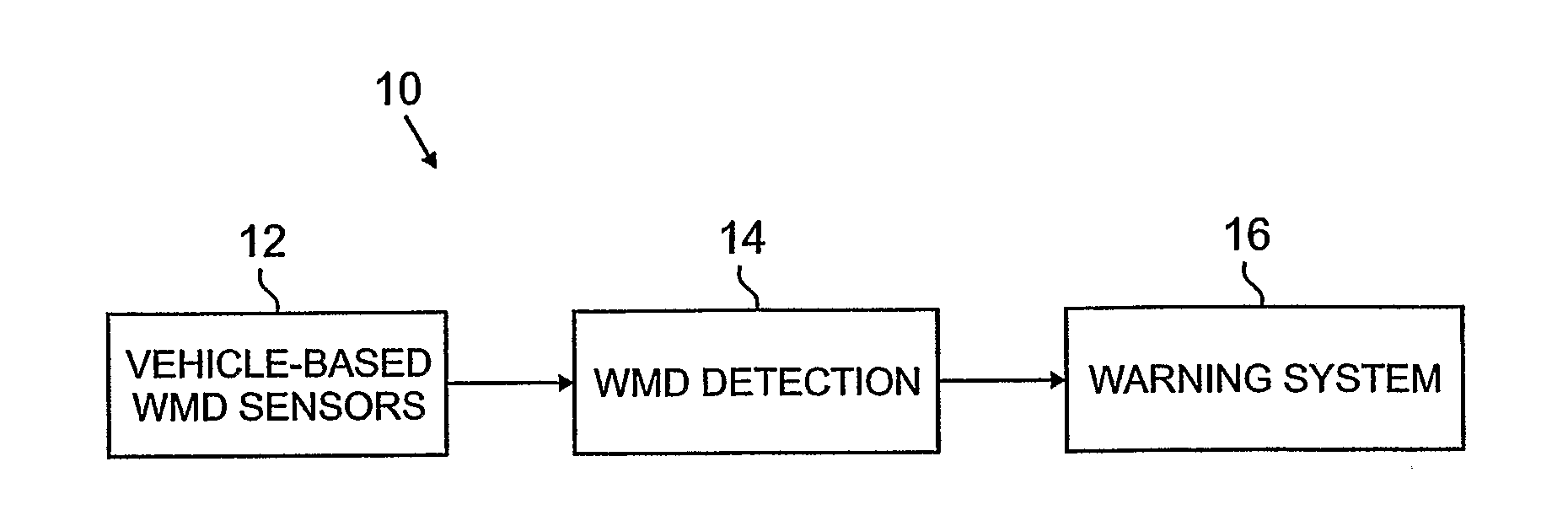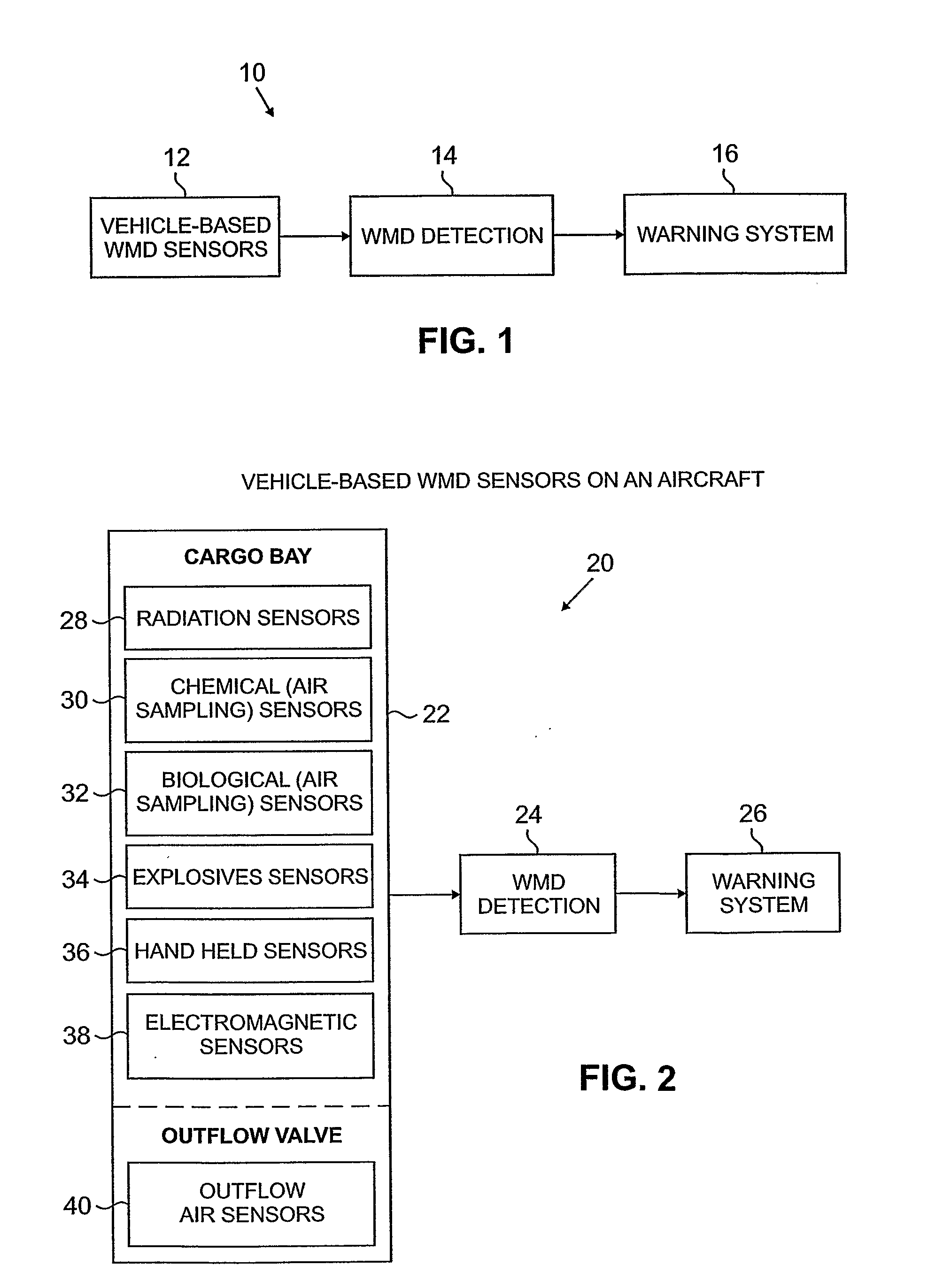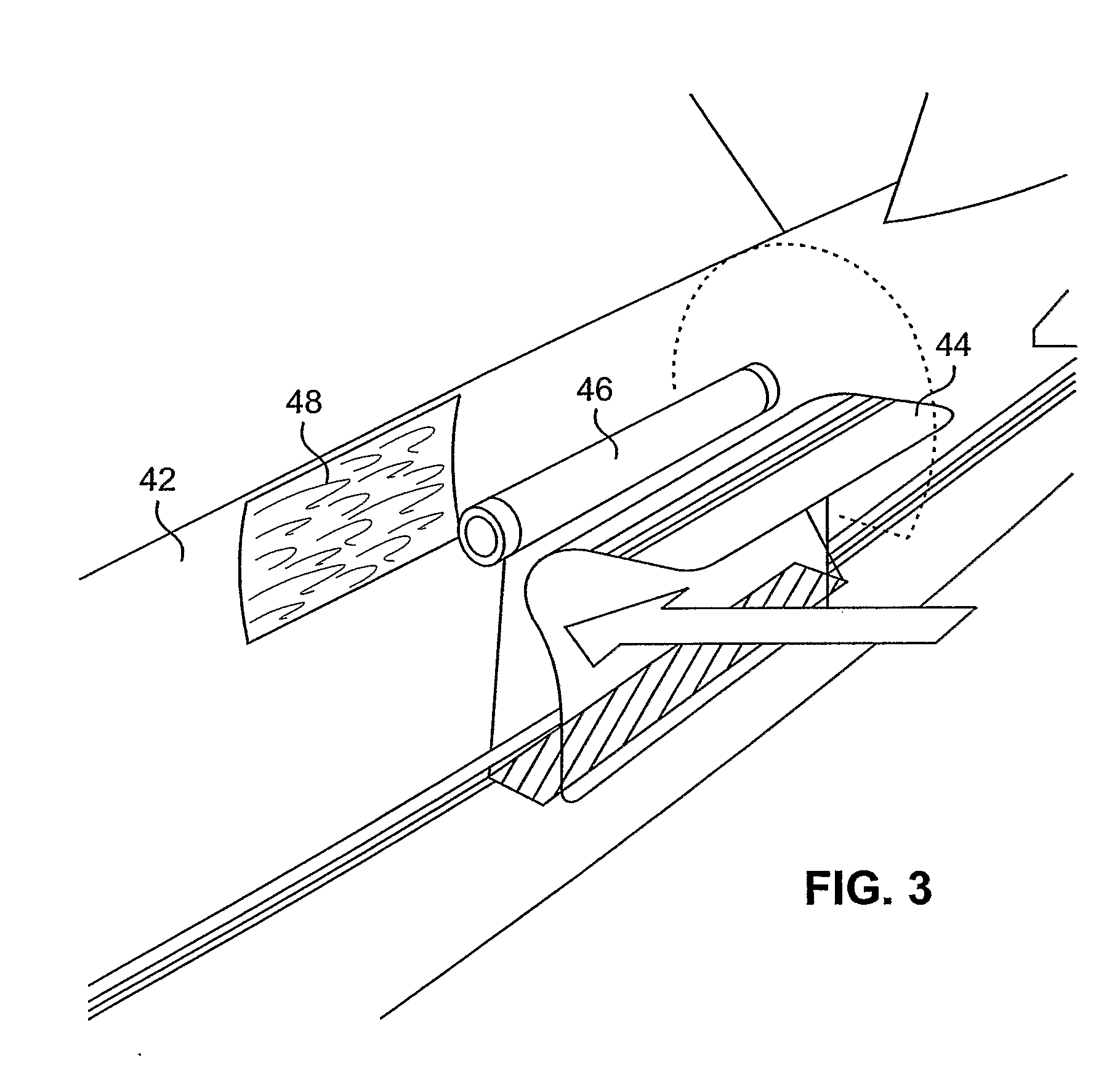Vehicle-Based Threat Detection System
a threat detection and vehicle technology, applied in the field of weapons detection systems, can solve the problems of ineffective ground-based cargo screening systems, negatively affecting the economy, and ineffective air cargo screening systems, similar to those currently in place for screening passengers and luggage, and achieves the effect of reducing the number of aircraft and cargo
- Summary
- Abstract
- Description
- Claims
- Application Information
AI Technical Summary
Problems solved by technology
Method used
Image
Examples
Embodiment Construction
[0013]FIG. 1 is a block diagram representing the major components of vehicle-based threat detection system 10 for scanning and monitoring cargo being loaded onto a vehicle. Threat detection system 10 includes vehicle-based WMD sensors 12, WMD detection unit 14, and warning system 16. As discussed in more detail below, the present invention relates to mounting sensors 12 on or inside the vehicle. The vehicle itself serves as the large machine that is used to screen the cargo. Thus the vehicle-based system of the present invention eliminates the need to have enormous scanning equipment, similar to that currently used for passenger luggage but with the capability of scanning substantially larger parcels. Because sensors 12 are mounted on or inside the vehicle, threat detection system 10 screens the cargo as it is being loaded onto the vehicle. Thus, system 10 does not add to the total handling time required before the cargo may be loaded onto the vehicle, in contrast to a ground-based ...
PUM
 Login to View More
Login to View More Abstract
Description
Claims
Application Information
 Login to View More
Login to View More - R&D
- Intellectual Property
- Life Sciences
- Materials
- Tech Scout
- Unparalleled Data Quality
- Higher Quality Content
- 60% Fewer Hallucinations
Browse by: Latest US Patents, China's latest patents, Technical Efficacy Thesaurus, Application Domain, Technology Topic, Popular Technical Reports.
© 2025 PatSnap. All rights reserved.Legal|Privacy policy|Modern Slavery Act Transparency Statement|Sitemap|About US| Contact US: help@patsnap.com



